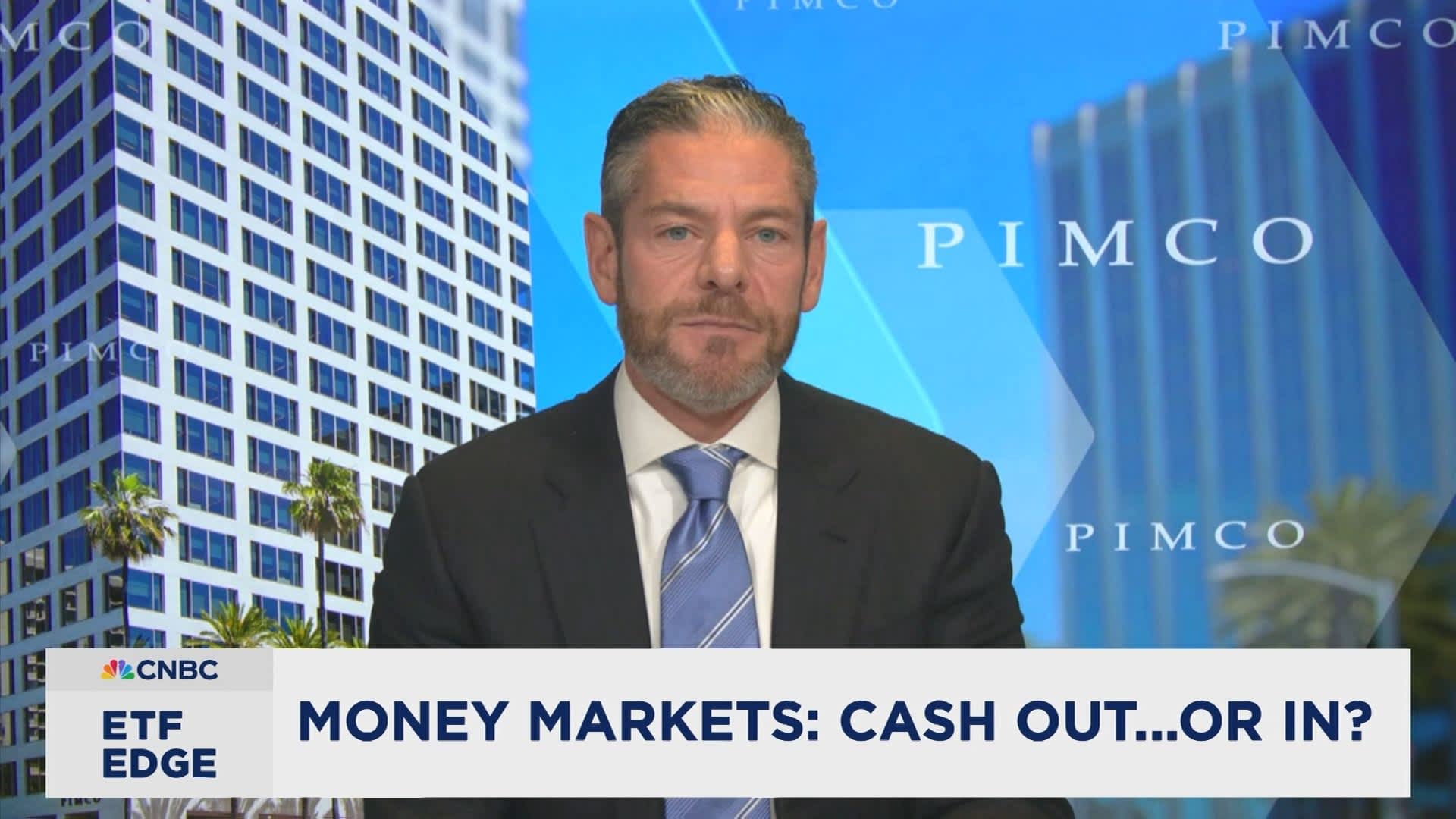
Investors may want to start preparing now to earn lower yields on their cash.
With the Federal Reserve signaling it could cut interest rates in September, Pimco’s Jerome Schneider sees a major disadvantage in holding on to cash as money market yields come down.
“You’re finding yourself moving from a 5% risk-free rate to a 3.5% risk-free rate pretty quickly on that cash,” the firm’s head of short-term portfolio management told CNBC’s “ETF Edge” last week.
The 100 largest money market funds are still offering a competitive return on cash at 5.12%, as of Sunday, per Crane Data. The benchmark 10-year U.S. Treasury yield, meanwhile, edged slightly lower to 3.93% early on Monday.
Schneider suggests it’s not too early for investors to explore other fixed income solutions—particularly exchange-traded funds, which could offer better returns in the long run.
“Move to those ultra-short ETF strategies, low-duration ETF strategies, even the bond and core ETF strategies that have actively managed components,” he said.
‘You shouldn’t overpay for your cash exposure’
Like Schneider, BondBloxx co-founder Joanna Gallegos sees bond ETFs as a crucial way to capture yield.
“ETF is a really important solution for Treasury exposure these days, so that you’re not sort of locked into either a CD or a money market fund that’s, frankly, probably a little overpriced,” Gallegos said in the same interview.
She also pointed to higher fees on some money markets as a reason for investors to look elsewhere.
“If you’re getting 5% yield, but you’re being charged 40 basis points for it, that’s not okay in this market,” she said. “There’s a lot of yield to be had in the Treasury side and still in the short-term side. You shouldn’t overpay for your cash exposure.”
Even with the potential to earn more yield elsewhere, Pimco’s Schneider doesn’t think all cash on the sidelines will flow into higher-paying assets.
“It’s not all meant to be put to work in terms of risk appetite,” he said. “It’s probably something around 15% by our assessment, which is a huge amount of money. $600 to $800 billion, but at the same time, we aren’t finding that it’s going to be put to work on a dime.”

